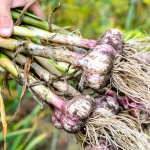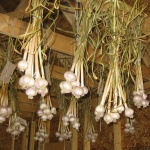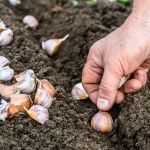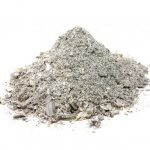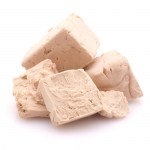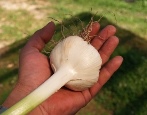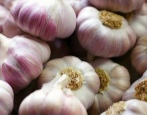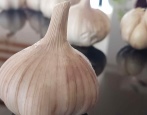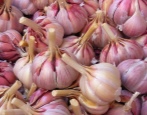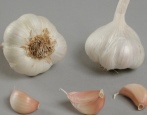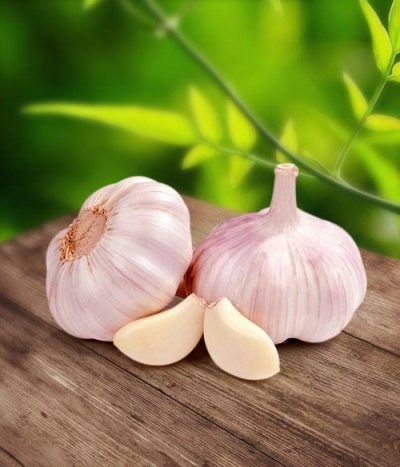
- Authors: Suzan V.G., Dmitriev I.I.
- Year of approval: 2019
- Sheet length, cm: 44
- Sheet width, cm: 3,1
- Leaf color: green with a waxy bloom of medium intensity
- The form: rounded flat
- Bulb size: large
- Bulb weight, g: 80-100
- Number of teeth: 6-8
- Dry scales: white
Summer residents who want to get a plentiful and early harvest of garlic often prefer winter varieties. Among the newcomer varieties recently developed by breeders, the Shadeika subspecies is worth mentioning.
Description of the variety
Shadeyka's garlic was bred in the Perm region thanks to the labors of the farmer Dmitriev and the breeder Suzan. Since 2019, the plant has been widely cultivated throughout the country and beyond. The mid-season variety has unique indicators of winter hardiness, perfectly resists diseases. This arrowhead semi-sharp garlic can be cultivated even by beginners in vegetable growing.
Characteristics of the appearance of plants and bulbs
The height of the Shadeika stem is about 70 centimeters. The leaves are green, covered with a medium waxy bloom. The length of the leaf is 44 centimeters, and the width is 3.1-3.5. Each arrow forms an air bulb, which is then used by summer residents for reproduction.
The bulbs are large, round-flat, weighing 80-100 grams. The largest ripe head weighed 146 g. Inside the bulb there are 6-8 cloves, there are specimens that form only 4 lobules. Dry scales are white, and juicy are creamy in color. The pulp is very light. Shadeika garlic demonstrates amazing keeping quality - up to 11 months under good conditions.
Purpose and taste
Shadeika has a semi-sharp and very spicy taste. The cloves of this garlic are widely used in cooking. They can be added to a variety of salads, used when frying main courses. Often this garlic is used for canning, preparation of blanks. Some dry out the heads.
Maturation
Shadeika belongs to mid-season varieties. Summer residents or breeders did not provide exact information about the time of its ripening, but on average, varieties with such a ripening period ripen in 98-105 days from the moment the sprouts break through.
Yield
Garlic is very productive: 2.5-4 kg per 1 m2 and 167 kg per hectare. These are averages.
Growing regions
You can grow Shadeika absolutely everywhere. Due to its winter hardiness and unpretentiousness, the variety perfectly takes root in all regions of the country, including the coldest.
Landing dates
It is customary to plant winter garlic of the described variety in winter. The periods are very different, you need to focus on your own region. So, in the coldest zones, it is better to plant plants in September. In the middle zone of the country they are planted in October, and in the south in November. It is imperative to set the time so that 21-30 days remain before frost.
Growing and care
You can plant Shadeika with teeth or bulbs. The earth is loosened well with a rake, and then grooves are made in it at a distance of 20-25 centimeters from each other. The seed is placed at a distance of 2-15 cm, deepening by 6-8 cm. Such a distance between the seed is due to the variability of the latter.
If these are teeth, the distance will be maximum, but the bulbs are planted as tightly as possible. After planting, a thin layer of mulching material is applied to the crops, about 4 centimeters. But if the area is too cold, you will also need large mulch: spruce branches, branches, etc.
When the snow melts, the coarse mulch will need to be removed. Winter garlic germinates early; already in March, many summer residents can observe it in the beds. Two weeks after germination, Shadeika is fed with urea or ammonium nitrate.After another 14 days, they are fed again, with the same fertilizer. Do not forget to loosen and weed the beds in a timely manner. They also organize regular watering. In warm spring, you will have to water about 5 times a week.
In the first month of summer, Shadeika winter garlic will require additional fertilizing in the form of phosphorus and potassium. You can use infusion of ash, superphosphate, potassium nitrate. Watering should be done at least in spring, but 21 days before harvesting, all irrigation is stopped. Loosening and weeding are carried out according to the same scheme.
Important: when the arrow of the garlic grows to 15 centimeters, it will need to be carefully broken off. If this is not done, the bulbs will grow small due to lack of nutrition.

You can plant garlic twice a year. The spring species is best planted in the spring, the winter one is sown before winter. Planting time depends on the region, climatic conditions, varieties, favorable days. It is also necessary to properly prepare the planting material and beds.
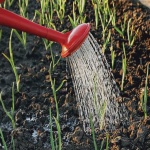
Soil requirements
Shadeika is planted in places that do not differ in high levels of humidity. This garlic grows best in flat areas or light hills. The substrate should be structured, fertile. Best results can be seen on soils with little sand or clay. Increased acidity is unacceptable for the variety.
Fertilizing the soil, it is worth using rotted organic matter, as well as mineral complexes in the form of superphosphate and potassium salt. Ash will also be a good top dressing.
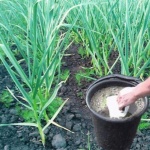
Top dressing of garlic plays a vital role in growing. The use of fertilizers contributes to the rapid growth of heads, an improvement in taste, and an increase in yield. There are many ways to feed him: this can be done with mineral or organic substances, as well as with all kinds of folk remedies.
Required climatic conditions
Shadeika garlic can resist even the most severe frosts, provided it is mulched. Do not be afraid that the bulbs will freeze. In spring and summer, this variety will actively grow even in severe drought. But it should be placed under the sun, out of the shade of trees and other crops.
Disease and pest resistance
Shadeika has strong immunity, but if stored improperly, it can be affected by rot. That is, diseased bulbs are already getting into the ground. To prevent disease, you need to properly collect and store the winter variety. Rust, which also happens, is treated with fungicidal preparations in several approaches.
This variety of garlic hardly attracts pests. They do not like its pungent smell, so cases of parasitism are rather an exception to the rule.
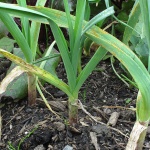
Review overview
So far, the Shadeyka variety has been little studied by summer residents. They did not notice any obvious minuses, but there are quite a few pluses. Gardeners say that garlic does not freeze even at -25 degrees, and in spring it is the first to break out of the ground. It requires very light care, does not cause problems with diseases and pests. Stored for a very long time.
However, summer residents noted that the taste of the product does not coincide with what was declared by the originator. So, the authors argue that this is semi-hot garlic, and summer residents insist on a very rich and pungent taste. In general, gardeners have just started trying to grow this variety, so there are few reviews about it.
